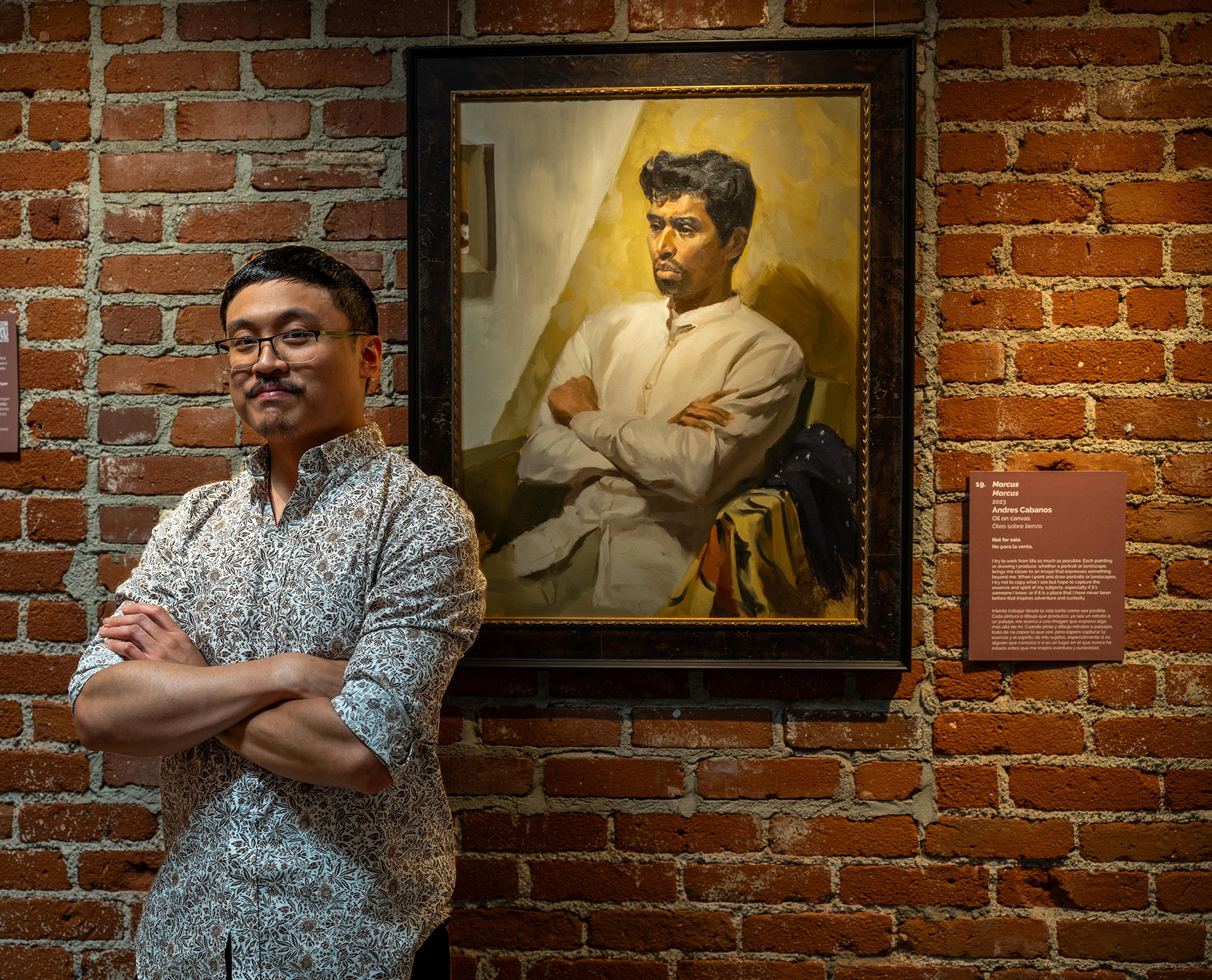Art School
RE-IMAGINED
World-Class Faculty
Glenn Vilppu
Animator and Educator, Disney, Marvel, Warner Bros.
Larissa Marantz
Nickelodeon Character Designer, Illustrator, and Educator
Bill Perkins
Disney Art Director and Visual Development Expert
Renae Wang
LCAD Foundations Instructor and Oil Painter
Mark Westermoe
Movie Poster Illustrator, Braveheart, Total Recall, Home Alone
Juliette Aristides
Author, Classical Drawing Atelier
Karl Gnass
Storyboard Artist for Major Studios
Cornelia Hernes
Former Principal Instructor, The Florence Academy of Art
Iliya Mirochnik
Ringling Instructor, Award-Winning Portrait Artist



Student Stories: Tom Bernardes
As a professional digital artist, Tom Bernardes sought to expand his artistic range, embracing oil painting to deepen his understanding of form, light, and structure. Through New Masters Academy, he refined his craft across both digital and traditional media, strengthening his artistic foundation with structured training and expert guidance. His dedication and perseverance were recognized when he placed Top 3 in NMA’s Thrive and Persevere: The Artist’s Journey contest, with his work featured in the 2025 NMA Calendar and as a standalone poster.
〝I knew something was missing, but I couldn’t see it. Now, I’m not just fixing my weaknesses—I’m building something real.〞


Student Stories: Andres Cabanos
Andres Cabanos, one of Southern California’s '30 Under 30' artists at the Santa Paula Museum, credits New Masters Academy with transforming his technical abilities and artistic vision. His featured painting, Mark, inspired by the work of Joaquín Sorolla, showcases the 'alla prima' technique, a skill he honed at NMA through our rigorous study of master painters.
〝Because I spent my time to understand the basics, I can now focus on the jazz, creating and expressing myself with much more clarity and ease.〞
MAR 14
Friday Draw Along with Glenn Vilppu
MAR 17
Rey Bustos Q&A
MAR 18
Imaginatomy Demo with Rey Bustos
MAR 21
Friday Draw Along with Glenn Vilppu
MAR 24
Class of 2027: Assignment VI Review
Unmatched Reference Library
Face-to-Face Learning
Pricing & Enrollment
Start Your Journey to Mastery Today.
Library Plan
Gain access to our complete online course library, including all Learning Tracks and digital campus access.
Access Includes
- All On-Demand Courses
- All Learning Tracks
- Full Digital Campus Access
- Live Community Events
- Downloadable Resources
- Customized MasterPlan™ to Guide Your Education
- Downloadble Student Planner
- $25 for first month, then $49/month until canceled.
Library+ Plan
Everything in the Library Plan, plus access to our exclusive reference library and Live Class recordings.
Access Includes
- Everything in Library Plan
- Image Reference Library
- 3D Model Reference Library
- Rare Art Book Library
- Live Class Recordings
Gift Cards Now Available!
Give the gift of learning with NMA. Perfect for artists at any skill level!
Get Personalized Instruction with NMA Tokens
Want feedback on your work? NMA Tokens allow you to get critiques, assignment grading, and one-on-one instruction from our world-class faculty, coaches, and TAs—on your terms.
Need help choosing a plan? Contact us for assistance.